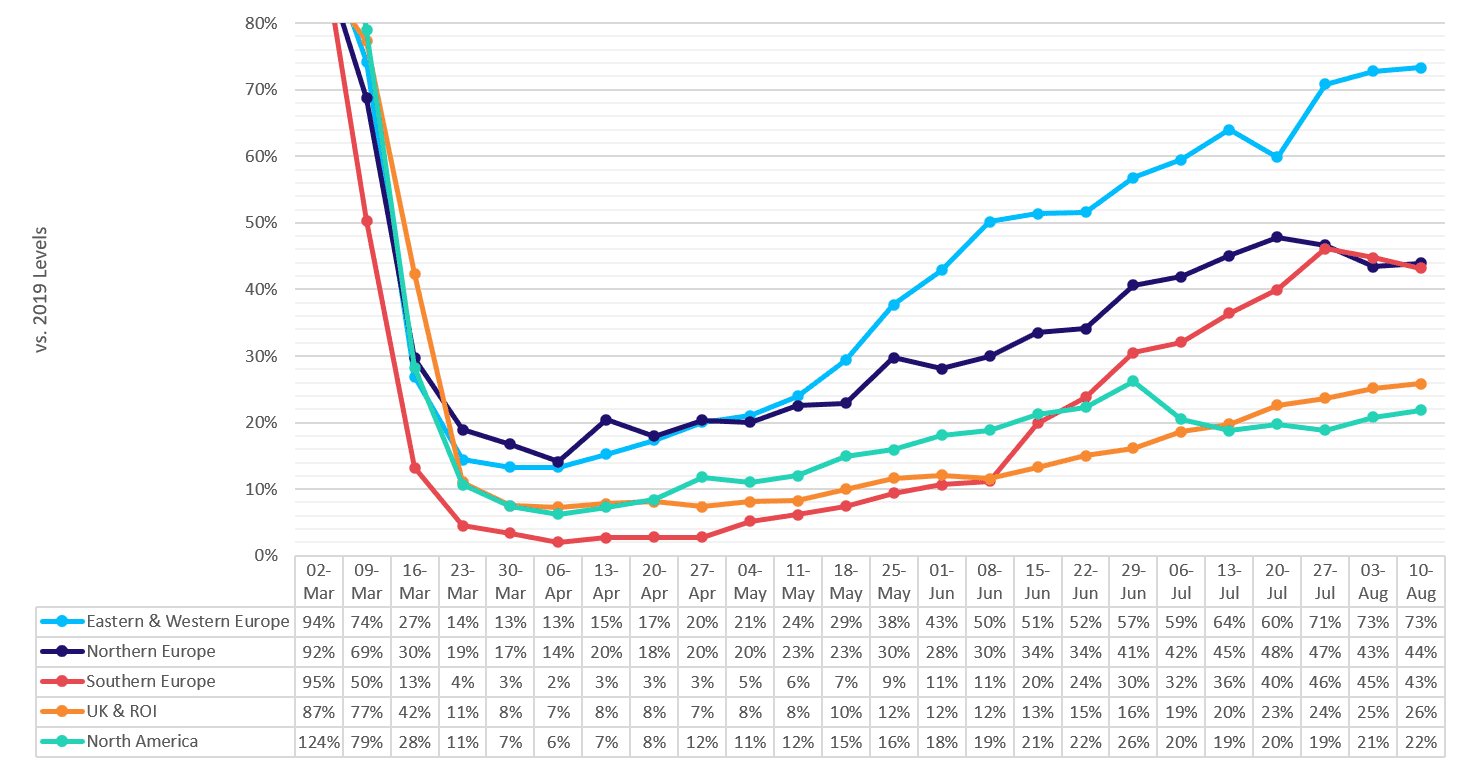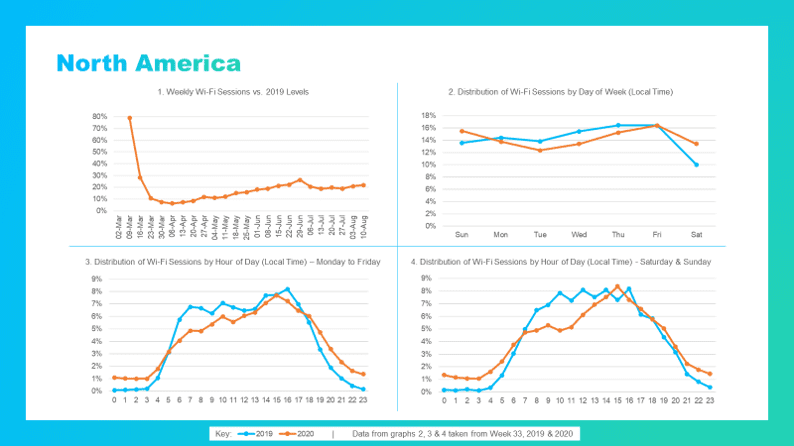Anecdotally, it has been difficult to gauge the progress that the various global regions have made in the five weeks since our last update.
On a personal note, my current circumstances mean, for the first time since March, I can write this article from my desk in one of Icomera’s UK offices. While I am joined by some members of my team (sitting just over 2 metres away), among our friends, family, and previously-office-based colleagues around the globe, we seem to be in the minority.
A summer of staycations, evolving rules around international travel corridors, and a general desire to mitigate the risks of a second wave have all understandably slowed efforts to return to office working en masse in late July and early August.
But has this also impeded the recovery of public transport usage?
To answer this question, Icomera has continued to collect the most recent Passenger Wi-Fi figures from 30,000+ trains, trams, buses, and coaches across Europe and North America equipped with our technology. We use this as a measure of public transport’s rate of recovery as COVID-19 restrictions are eased around the world, using our observations from 2019 as our baseline.

(View full resolution here)
- Eastern and Western Europe have shown the strongest recovery to date. Passenger Wi-Fi usage in these regions has made a +60 percentage point recovery from the lowest point (13%), to now sit at 73% of 2019 levels.
- Northern Europe (excluding the UK and Republic of Ireland) is up 30p.p. to 44%, but the gradual recovery made from the low point in April has been reversing in recent weeks, potentially a combination of recovery efforts being interrupted by the summer vacation period and less international travel.
- Southern Europe, up 41p.p to 43%, is seeing the second fastest recovery rate of any region, bringing it close to Northern Europe’s level from a comparatively weaker starting position. Like Northern Europe, it has also seen a reverse in recent weeks, possibly for the same reasons.
- In the United Kingdom and the Republic of Ireland, government advice about avoiding public transport was relaxed at the start of the month and Passenger Wi-Fi usage levels in these regions are now up 19p.p. to 26% of 2019 levels.
- North America is up 16p.p. from its low point to 22% but has still not fully recovered from a -6p.p. setback in early July. As such, North America has now fallen behind the United Kingdom and the Republic of Ireland, making it the least positive recovery to this point.
Icomera also reports on the distribution of Wi-Fi sessions by day of the week, and by time of day. The latest data is taken from week 33 in 2020, and compared with the same week in August 2019. The data for North America is shown below. Wi-Fi Session distribution graphs for all regions are available here.

- As we’ve seen previously, regions with the strongest recoveries are seeing less of a shift in travel habits. Northern, Eastern and Western Europe show only minor variances between daily and hourly Wi-Fi session distribution in 2019 and 2020.
- The distribution of Wi-Fi sessions by hour of day for Monday to Friday in the other regions shows the obvious pre-COVID morning and late-afternoon peak hours have been replaced with quieter mornings and a more gradual ramp-up to mid – late afternoon peaks
We’ll see in the next month if the end of summer in the northern hemisphere heralds a positive step change in public transport usage. Beyond September, there are no obvious external trigger events for a significant increase in the rate of recovery (short of a vaccine) on the horizon. From that point on, the industry will need to drive its own recovery, likely propelled by technological innovation and intelligence based on fast access to data.
Icomera calls this the industry’s “Internet-enabled recovery plan”. As the world’s leading provider of mobile Internet connectivity for public transport, we have long recognised the value of reliably and securely transmitting data to and from vehicles, either streaming it in real-time or offloading it on-demand. Now our work is taking on a greater significance as we support operators in their efforts to protect passengers, control the spread of the virus, and ultimately shift society’s travel habits back towards sustainable, green mobility.
If you’re interested in following our progress on this Connected Journey, please consider subscribing to our mailing list.


